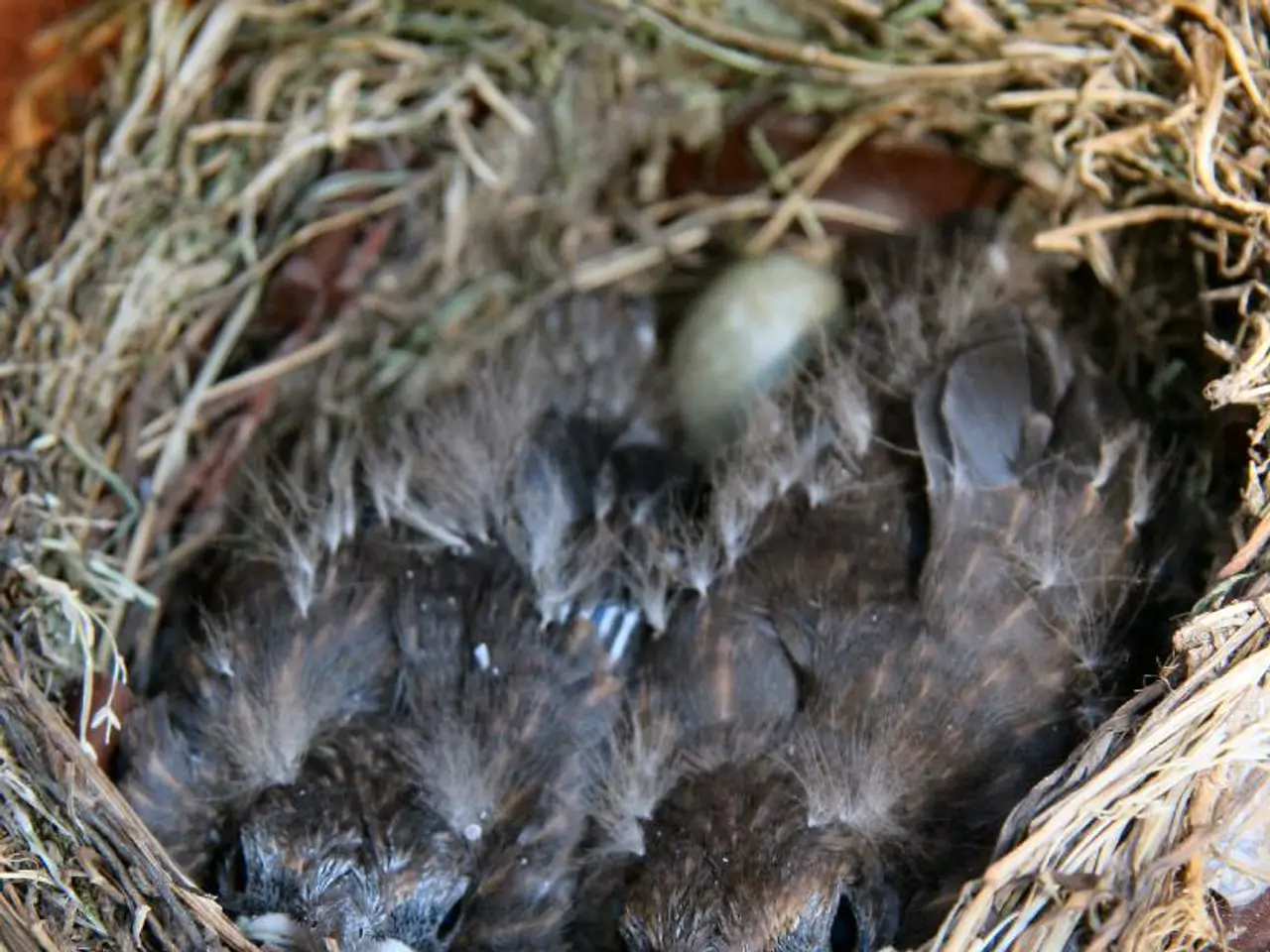Researchers Observed Great Tits throughout Winter, Discovering Tendencies Indicating Approaching Divorce
Great Tits Show Winter "Divorce" Signs, Suggesting Dynamic Bird Relationships
A new study published in the Proceedings of the Royal Society B has revealed that great tits, a common European songbird known for their monogamous breeding pairs, show signs of "divorce" during the winter months, well before the next breeding season.
The research, led by Adelaide Daisy Abraham, a PhD student at Oxford University, used data from one of the world's longest-running wild bird studies. The study involved tiny electronic tags attached to each bird, which recorded visits to feeders scattered throughout Wytham Woods.
According to the findings, divorcing great tit pairs begin to separate months before the next breeding season, a process the authors refer to as a slow unfolding. These pairs spend significantly less time together during the non-breeding season, socialize less with each other, visit feeders at different times, and progressively become more distant compared to faithful pairs who strengthen their bond over winter.
Specifically, researchers found that divorcing great tits have lower "winter association scores," indicating fewer shared flocking events with their partners, and exhibit less synchronized behavior such as feeding together or closely in time ("visit adjacency") whereas faithful pairs increase these behaviors over winter.
This selective distancing suggests that divorce in great tits is an ongoing, socially driven process where pair bonds weaken before the breeding season starts. By monitoring individual social behavior in winter, scientists can forecast the likelihood that a pair will stay together or divorce in spring, revealing that pair bond stability is not static but dynamically reflected in their winter social interactions.
Previous studies have linked bird separation to poor breeding success, but this new study adds a fresh dimension by focusing on the timing of the separation process. The study's findings hint at broader principles of animal behavior, potentially applying to other species such as mammals, fish, and even humans.
Interestingly, newly forming pairs initially resembled divorcing pairs in their behavior, but gradually started acting more like faithful ones by late winter. This indicates that the dynamics of bird relationships are not static and can change during the winter months.
The study's lead author, Adelaide Daisy Abraham, clarifies that the term "divorce" is used in scientific literature to describe monogamous bird pairs that separate despite both partners being alive and capable of breeding. The researchers argue that the social signals of divorce can be predicted in great tits, which could have implications for understanding social behavior in other species.
The study was conducted over multiple years, allowing the team to link relationship dynamics to real-world behavior in the field. This groundbreaking research provides a new perspective on the complexity of bird relationships and opens up exciting possibilities for future studies in animal behavior.
- The study of great tits' winter behaviors contributes to the broader field of science, offering insights that might extend to technology and the future, not just in avian species, but possibly in mammals, fish, and even humans.
- The process of great tit pair separation, referred to as 'slow unfolding' in the research, showcases the dynamic nature of relationships, suggesting that pair bond stability isn't static but is reflected in their winter social interactions.
- In the context of health-and-wellness and lifestyle, understanding the social patterns of great tits during winter could shed light on human relationship dynamics and provide tools for predicting relationship stability.
- As the tech industry continues to innovate, research like this could lead to advancements in technology that help monitor and forecast relationship trends, aiding in areas such as fitness-and-exercise, personal development, and mental health.
- By utilizing small electronic tags and data from one of the world's longest-running wild bird studies, researchers gained a deeper understanding of how climate change and varying environments may impact relationships, providing invaluable knowledge for future research.
- As we move towards an increasingly connected and data-driven world, the findings of studies such as this highlight the importance of interdisciplinary collaboration between fields like climate research, science, and technology in uncovering complex phenomena and shaping a better understanding of the natural world.




